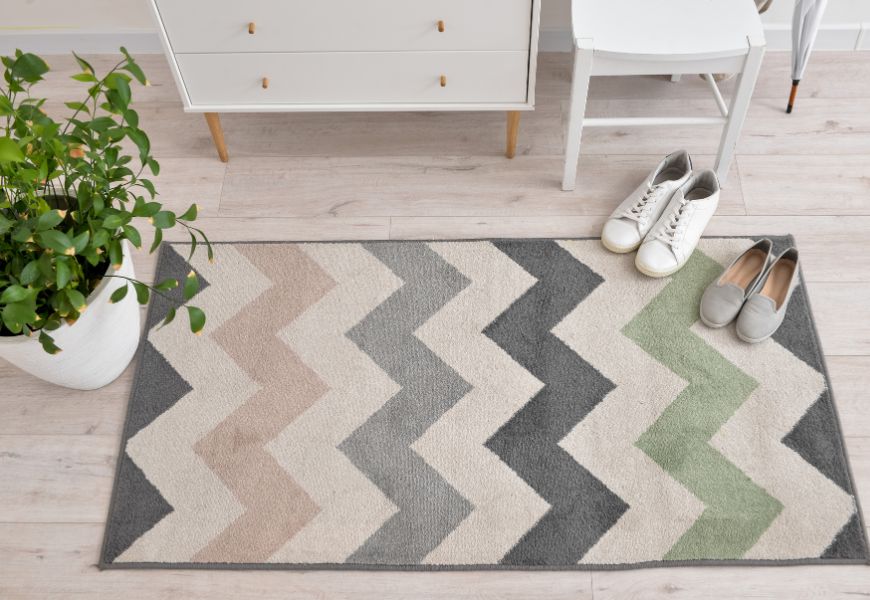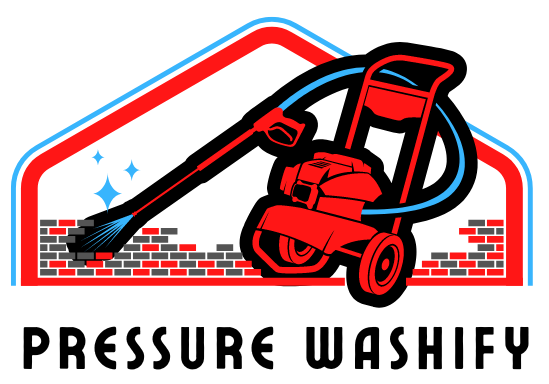Affiliate Disclaimer: This post may contain affiliate links, meaning we get a commission if you decide to make a purchase through our links, at no extra cost to you.
Ever pressure-washed your rug and been unsure of the next steps? Well, we’ve got you covered! Properly drying your rug is a crucial part of maintaining its quality. Let’s dive into the first steps towards a dry, fresh-looking rug.
Preparing the Rug for Drying
Getting your rug ready for the drying process is all about removing that excess water. Here are the simple steps to follow:
- Examine the Rug: After pressure washing, evaluate how much water remains in the rug.
- Press Gently But Firmly: Using a soft cloth or sponge, press gently but firmly into the rug – we’re trying to absorb as much water as possible.
- Don’t Scrub: Remember, our goal here is to remove water, not to clean. Avoid scrubbing the rug as it may cause damage to the fibers.
- Patience is Key: This step takes some time, but it’s worthwhile. The less water remaining in the rug, the quicker and more effectively it will dry.
The Drying Process
Once you have effectively removed as much moisture from the rug as possible manually, the next essential step is to let nature do its work. Even though it sounds simple, there are some best practices to follow, let’s take a closer look at these:
Hang the Rug Up
The simplest and most effective way of drying your rug is by hanging it up vertically. This allows gravity to pull excess water down and away from the rug, helping speed up the drying process. You should make sure to do this on a sunny, windy day if possible as the natural sun heat can aid in drying the rug faster.

Using dry towels
For circumstances where drying the rug outside isn’t a practical option, you can resort to this indoor method. Lay your rug flat and take a dry towel or a mop and gently press it to the rug so it absorbs the water. Make sure to periodically wring out the towel or mop to ensure maximum absorption. Repeat this process until the towel or mop can absorb little to no water.
Using Fans and Dehumidifiers
If you’re in a hurry or want to expedite the rug-drying process, a fan or a dehumidifier can be an incredible help. They work by promoting air circulation around the rug, which gives way to faster evaporation – a key part of the rug drying process.
You can use a drying fan like the Lasko U12104 High Velocity Pro Pivoting Utility Fan.
This fan is a game-changer when it comes to drying rugs after pressure washing. Not only does it offer three fan speeds, but it also provides maximum air delivery of approximately 289 CFMs, making it perfect for cooling and drying out wet carpeting and rugs.
Key Features:
- Variety of Speeds: Offers three fan speeds to cater to different drying needs.
- Max Air Delivery: Provides approx. 289 CFMs of airflow, perfect for drying wet rugs.
- User-friendly Design: Comes with an easy-to-use rotary dial controller.
- Rugged Construction: Built to last and sturdy enough for both household and workshop use.
- Flexible Use: 270-degree pivoting action to direct airflow where required.
Post-drying Steps
Hooray! Your rug is now dry, but the process isn’t over yet. There are some additional steps you should take to ensure your rug returns to its original state fully.
Step 1: Inspect the Rug
Once your rug is completely dry, take a moment to carefully inspect it. It should feel dry to the touch, with no damp areas. If you find any damp spots, be patient and allow these to completely dry before moving on to the next step.
Step 2: Vacuum the Rug
After your rug is well and truly dry, it’s time to give it a proper vacuum. This helps to fluff up the fibers and restore the rug’s texture, making it feel like new. Additionally, vacuuming ensures any residual dirt, picked up during the drying process, is removed.
Step 3: No Detergent Left Behind
When pressure washing your rug, you probably used a detergent to help give it a deep clean. This is an excellent practice; however, it can sometimes leave a residue on the rug that hardens as it dries. Carry out a simple hand-check by rubbing your hand over the rug and checking for any soapy or gritty feeling. If you do find residue, give the rug another rinse with just water and repeat the drying process.

Pros and Cons of Rug Drying Methods
Let’s look at some pros and cons of the methods we’ve been discussing.
Outdoor Drying Method
This is where you hang your rug outside to allow the sun and wind to do what they do best.
Pros:
- It’s a free method. No electricity or special equipment is required.
- It’s natural, and for most rugs, it will prevent shrinkage and color fade.
Cons:
- It’s dependent on the weather. You need a good sunny day, and if it’s a larger rug, it might take more than one day.
- It requires outdoor space. You’ll need a clothesline or somewhere suitable to hang the rug.
Towel Drying Method
This method involves laying your rug flat and using a dry towel or mop to absorb any excess moisture.
Pros:
- It’s also free, except for the cost of washing the towels afterward.
- It can be done inside, so it’s not weather-dependent.
Cons:
- It requires a lot of manual labor, especially for larger rugs.
- It can take a long time, perhaps even a couple of days, depending on the rug’s thickness and size.
Using Fans or Dehumidifiers
This drying method uses electric fans, air movers or dehumidifiers to aid in faster drying.
Pros:
- It makes the process quicker, especially for larger, thicker rugs.
- It’s not weather-dependent and can be done indoors.
Cons:
- There’s an electricity cost involved, and you might also need to invest in fans or a dehumidifier if you don’t already have these items.
- You’ll need space, as it’s best to create a ‘drying room’ where the rug can lie flat and the devices can do their job.
FAQs
1. Why can’t I use a dryer or heater to dry my rug after pressure washing?
Using heat to dry a rug may sound effective, but it can cause more harm than good. High heat can lead to shrinkage, color fading, and even damage to the rug fibers.
2. Can I skip pressure washing and go straight to vacuuming?
No. Pressure washing helps to eliminate deep-seated dirt and grime that vacuuming alone can’t remove. Vacuums are useful for maintaining clean rugs, but for thorough cleaning, pressure washing is highly recommended.
3. What should I do if I notice mold on my rug after drying?
Mold usually occurs if the rug hasn’t dried properly or was stored wet. If you come across this, get the rug professionally cleaned. If not severe, you can try cleaning it with a vinegar solution.
4. My rug has lost its soft texture after pressure washing. How can I restore it?
Using a soft-bristle brush during the drying process can lift up fibers and restore the rug’s softness. If all else fails, consider taking the rug to a professional.
5. Can I pressure wash all types of rugs?
Pressure washing isn’t suitable for all rug types. Delicate rugs, such as Persian or silk rugs, should be professionally cleaned to avoid damage.










